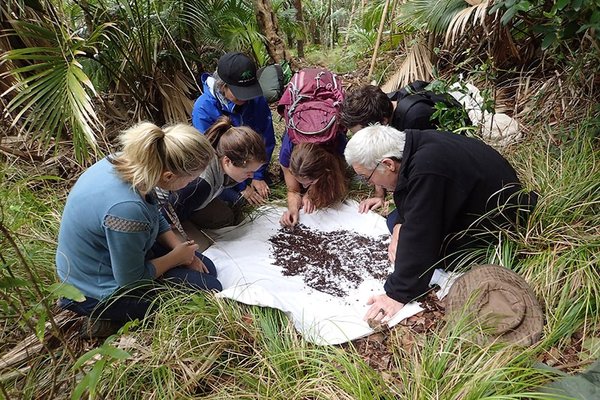Wallagoot BioBlitz
The Australian Museum attended the Wallagoot Bioblitz on the NSW Sapphire Coast.
Cecil Ellis and Greg McDonald ran Freshwater Macroinvertebrate surveys in early December. We surveyed several freshwater ecosystems over the weekend but to their disappointment they were unable to access any flowing water systems within the survey areas.

© Australian Museum
All samples were collected in the field and transported to Basecamp at Bournda Environmental Education Centre for sorting and identification. Records from these surveys will contribute to the Atlas of Life in the Coastal Wilderness, a portal for the Atlas of Living Australia database. We also sent several Museum in a Boxes down for the event to provide additional educational resources at Basecamp
The Wallagoot catchment is a mix of forest regrowth or woodland with cleared areas under agriculture. The semi-permanent creek, Moncks Creek, runs through the catchment and the headwater reaches look interesting from satellite imagery. Unfortunately we didn’t have access through private land and our efforts were restricted to freshwater wetlands along the coastal plain.

© Australian Museum
The BioBlitz itself was well attended by naturalists, scientists, schools and community members. The weather was warm for both days and surveys including ours were well attended. The ever present threat of ticks did not seem to be a great deterrent despite the number of human hosts becoming apparent.
Stuart Harris was successful very early on in finding 3 species of Peacock spider which excited everyone.
Libby Hepburn from the Atlas of Life in the Coastal Wilderness and organiser of the BioBlitz estimates they found over 1000 species throughout the event.
Our specimens were brought from the field to be identified at basecamp at Bournda Environmental Education Centre. The most popular animals in our trays were a of water scorpions in the family Nepidae. The water mites, Acarina also proved of interest, especially amongst our young volunteers.
It was great to see so much enthusiasm during the Bioblitz and also to have fantastic camaraderie and support from Stephen Skinner of the Sydney Botanical Gardens. We look forward to being part again next year.




